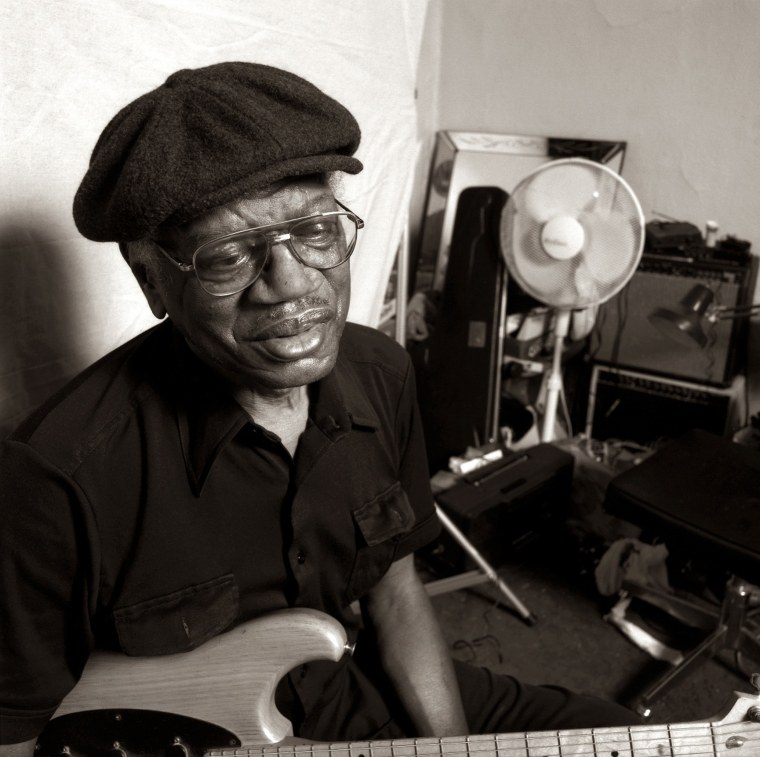There's a widely held belief that blues music was born in the Mississippi Delta, traveled up river to places like Memphis and then north to Chicago.
Not so fast, St. Louis says.
A gallery exhibit, a new book and a nonprofit group are making the case that St. Louis brought together a mix of country and city musicians, resulting in significant contributions to the genre.
"It's a shame we don't have a natural shrine to the genre," said Paul Reuter, executive director of the Sheldon Arts Foundation, which was formed to preserve the historic Sheldon Concert Hall. "There's no place to take a picture and say `this is where it all began.'"
At the Sheldon Art Galleries, a show has opened called "Legends of St. Louis Blues Music" which will run through Aug. 28, 2010. St. Louisans interested in highlighting the city's blues past note it's hard to find blockbuster items to display. Framed records, photos and posters give a sense of the blues, but it's still sound and video clips that provide the best examples of the music's unvarnished power.
The Sheldon will also feature live performances, like a gala featuring blues and jazz singer Kim Massie, in conjunction with the show.
A nonprofit, the St. Louis Rhythm & Blues Preservation Society, is organizing new master classes, pitched as an opportunity for people to learn from blues and rhythm and blues performers, who will tell stories, play music and perhaps teach student musicians.
Early events will be held at the Portfolio Gallery in the city's Grand Center arts district. The hope is to eventually have a permanent music collection and venue space.
One of the first performers to be presented is blues harmonica player Big George Brock. At 77, Brock is a natural storyteller, who talks easily about growing up in Mississippi, playing music with Muddy Waters in Brock's mother's backyard during fish fries, working as a sharecropper in cotton fields, becoming a boxer who once beat Sonny Liston and fathering, he claims, 42 children.
He used to play seven nights a week, and he still performs live.
Brock is diabetic, and he doesn't hide the fact that his health is not the best. But dressed from head to toe in a natty brown outfit complete with derby hat, jeweled rings, and a sparkly Barack Obama watch, the years appear to slip away as he picks up a harmonica and plays.
"If anybody just sits down and listens to the blues, they'll find the blues ain't nothing but the truth," he said. "I lived the blues; I lived them, and I know exactly how they're supposed to go. I just play about how I've felt," he said.
A new book, "Devil at the Confluence," also documents prewar blues music in St. Louis. Author Kevin Belford began collecting his material 15 years ago for a series of portraits focusing on blues greats with strong ties to St. Louis, performers like Lonnie Johnson, Walter Davis, Roosevelt Sykes and Peetie Wheatstraw. Each man had made more than 100 recordings, and the city had dozens of famed female artists, too. Yet information was hard to come by.
"Wait, there's a gap there," Belford realized.
After scouring old record collections and newspaper clippings, scrutinizing past city maps and talking to just about anyone who knew about the local blues, Belford illustrated and wrote his book. His work is also included in the Sheldon show. The book release includes a new CD from Delmark Records, a label started by Bob Koester, who opened a record store while attending school in St. Louis in the 1950s and recorded several of the city's jazz and blues artists.
St. Louis' blues contributions may have been overlooked, in part, because performers largely traveled to other cities to make records. The St. Louis Blues Society has worked for years to highlight the best of the city's past and current blues, but efforts for a permanent museum never materialized.
"There's some of the best blues music in St. Louis that they've ever had," Brock said, "but they don't support it like they used to."
He hopes the new efforts will give young musicians in the area greater appreciation for the blues. "When I do go out, they're getting away from the blues. It kills my spirit to hear them play something that won't amount to anything."
